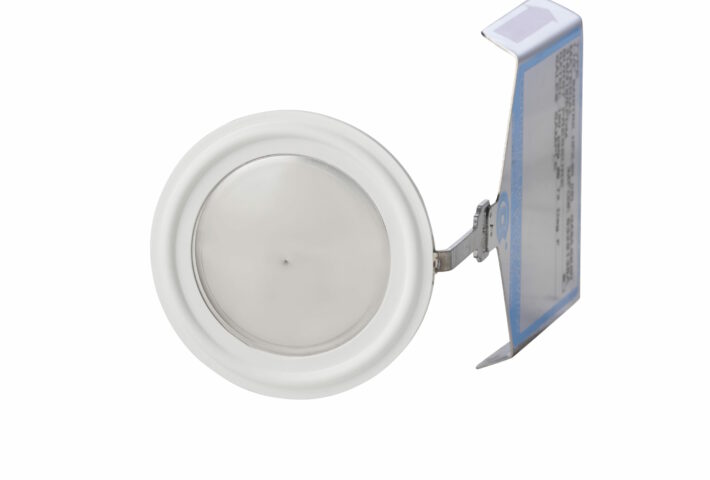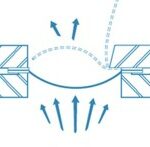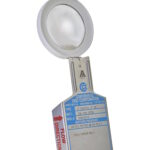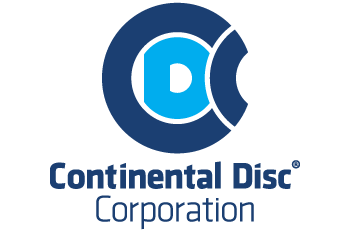Correct Selection of Rupture Discs to Optimize the Production Process
November 29, 2023

Safety rupture discs play a crucial role in safeguarding installations and equipment from excessive pressure rise or pressure drop (vacuum). They are used to protect various components such as process plants, autoclaves, bioreactors, heat exchangers, fermenters, storage tanks, and mixing or drying equipment. Rupture discs can serve as the primary protection for a plant or work in tandem with a safety valve, forming combination in a rupture discs-mounted underneath safety valve arrangement. The operational advantage lies in the rupture discs triggering in milliseconds once the desired rupture pressure is reached, making it the most reliable mechanical protection for the installation.
The first step towards optimizing the production process is careful selection of a rupture disc as the sole protection against vacuum or pressure rise. Depending on the “OR” value, representing the operating pressure to minimum burst pressure, and the specific nature of the plant or equipment, the choice may lean towards either concave or convex plates. Refer to Figures 1 and 2 for visual representation.


Therefore, if the OR value exceeds 80%, opting for reverse-action inserts (convex inserts) is advisable. These inserts are particularly recommended for operating pressures up to 95% of the minimum burst pressure, especially in situations involving vacuum. The SANITRX HPX (II) 95 inserts, manufactured by Continental Disc Corporation, align perfectly with these requirements.
Setting aside the selection of the wafer dimensions for its throughput, the second optimization step involves choosing the appropriate burst pressure. According to ISO 4126-6, burst pressure is defined as the value between the insert’s maximum burst pressure (MBR) and minimum burst pressure (MNBR). The maximum burst pressure (MBR) as well as the minimum burst pressure (MNBR) must be determined by the manufacturer depending on the process temperature and material design of the plate. Between these values is the so-called Performance Tolerance, which is only +- 5 % for the SANITRX HPX reverse-action inserts. Table 2 of ISO 4126-6 gives typical standard values for the Performance Tolerance. Each value given in the table is still burdened with the so-called manufacturer’s performance tolerance, in the case of SANITRX HPX plates this value is 0%. This means that if the max/min burst pressure values are given on the nameplate, in accordance with the requirements of PED and ISO 4126, they are not subject to any error, an additional manufacturing tolerance. If there is pulsating operating pressure on the system, however, the highest values must not exceed the minimum burst pressure, the plate may or may not burst at this pressure. A more favorable solution from the point of view of process optimization would therefore be to use only a rupture plate. This is because a spring-loaded safety valve will operate unstably, open slightly and close immediately releasing pressure. If the valve is not completely open, the flowing medium will certainly erode the edges of the valve seat. (Spring safety valves are set with a tolerance of +- 3% of the setting pressure). The valve seat and the valve plug may be damaged.
The third step of production optimization is to save installation on the plant. The rupture discs are mounted on the pipeline, in holders or in a clamping fixture.


They take up very little space, plus the nameplate can be suitably bent to facilitate safe passages and access to the device. All the rupture discs produced by Continental Disc Corporation tear without defragmenting the disc, which means that no fragments of the disc will find their way into the installation. So you can mount the discs anywhere in the process, of course, so that they perform their function.
The cost of running the process is also related to the cost of spare parts or maintenance. The rupture discs do not require maintenance, servicing, periodic inspections or spare parts.
The fourth step in optimizing the process is the installation of a rupture disc burst sensor.
The CDC provides two systems: the BDI sensor system and the BDI alarm system. Both of these systems can be connected directly to the plant’s main control system, immediately informing the operator of a disc rupture and thus the need to stop the process. The immediate shutdown of the process will save the consumption of the medium concerned.
Bibliography:
– ISO 4126-6 standard
– Technical material from Continental Disc Corporation
Would you like to know more about this product scope or discuss your future projects? Please contact the Thurne specialist if you would like to learn more about safety components. We can supply the precisely correct solutions, depending on the specific process and engineering needs, even for very high pressures.

Johan Andersen
Product Sales ManagerJOHAN ANDERSEN
Product Sales Manager
Industrial Engineering
PHONE NUMBER
Direct phone: +46 (0)8 - 55 76 93 37
Mobile: +46 70 781 37 80

Olli-Pekka Tikkanen
Product Sales ManagerOLLI-PEKKA TIKKANEN
Product Sales Manager
B. Sc. Chemical Engineering
PHONE NUMBER
Mobile: +358 40 730 8464

Andris Putnins
Product Sales ManagerANDRIS PUTNINS
Product Sales Manager
B.Sc. Chemical Engineering, M.Sc. Materials Science
PHONE NUMBER
Direct Phone: +371 6616 3763
Mobile: +371 2689 6799


